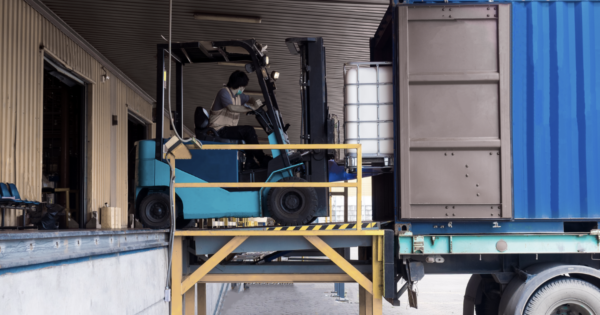
Thousands of New Warehouses Will Soon Be Needed Across the UK and Europe
According to the ONS (Office of National Statistics) in May 2021, 27.3% of all retail transactions in the UK were made online. Now, this may be a mite smaller than 36.3% high of January 2021, but it’s double than the pre-pandemic 19.1% total of February 2020.
By now, everyone knows that Covid-19 prompted a huge jump in online retail transactions. In a short space of time, everything from food to consumables became digital purchases, promoting the most marked change to shopping habits in generations – maybe ever.
As of the end of June 2021, the end of Covid restrictions is in sight. After delaying lifting lockdown restrictions, Prime Minister Boris Johnson has said that the plan to ease lockdown restrictions on July 19th is ‘looking good.’
However, does this mean that retail spending will go back to normal? Unlikely. Sadly, brick and mortar retailers have collapsed into administration. The Centre for Retail Research announcing at the start of April 2021 that 188,685 jobs have been lost in just twelve months.
What does this mean for warehousing and logistics? In short, demand has evolved. The boom in online shopping has driven significant demand for warehouse space.
The 2021 and Beyond Outlook
According to the CBRE Group Inc., world’s largest commercial real estate services and investment firm with revenues of $24 billion in 2020 alone, thousands of new warehouses will be needed in the UK and Europe to accommodate changing consumer spending habits.
As expansive as this forecast sounds, it’s one based on market activity. Some of the biggest names on the high street have either gone bankrupt or announced stagging losses. Take John Lewis, for example. So long considered to be the most reliable indicator of how the UK retail sector is performing, at the start of 2021, the company announced a pre-tax loss of £517 million.
We are in the age of the eCommerce retailer. With that comes significant changes to supply chains. In fact, CBRE estimates that an additional 300 million square feet of retail space will be needed throughout Europe by 2025. The UK alone will require an additional 60 million square feet of retail space – or the equivalent of 14% of existing warehouse space.
What does this mean for supply chain operations? New, more innovative warehousing and logistics provisions will be required. Mobile yard ramp solutions will become essential to seamless supply chains. Smaller or pop-up warehouses may begin to dot the landscape – flexible, mobile loading ramps and docking stations will be the only way for retailers to operate without disruption.
The Impact of Property Investment
As the pandemic unfolded, and seeing an opportunity, property investors have been building and buying up vast amounts of warehousing space, encouraged by the opinion that spending habits have forever changed.
This opinion isn’t only shared by SMEs, but blue-chip businesses. Leading global investment company, Blackstone, has invested billions in the warehousing sector, believing that eCommerce transactions will continue to prosper over the next four years.
Citing the fact that goods purchased online require three-times more logistics space than brick and mortar shops, they believe that investing in logistics space to be a wise one – despite the ONS’s most recent figures that suggest eCommerce transactions have shrunk since January 2021.
In truth, the record market share percentage of 36.3% enjoyed by online sales in January could be interpreted as skewered data. Why? Well, for one thing, the post-Christmas season is when retailers run new year sales. The other circumstance that may have affected the market share percentage is that the UK went back into lockdown on 4th January and non-essential retail shops were closed.
As of May 2021, the eCommerce market share percentage stands at 27.3%, hardly a significant drop from January’s high. When you consider that just over 10 years ago, in July 2010, the eCommerce market share percentage was 6.7%, it’s quite clear that online eCommerce sales have grown exponentially in a single decade.
However, all the talk of monthly percentage changes can be treated as inconsequential. The fact is that the face of the logistics sector has changed, and supply chain logistics will evolve to meet consumer demand. Warehouses will need to optimise processes with mobile logistics to ensure that supply chains are not disrupted. The more logistics space is needed, the more supply chain logistics solutions, like mobile bay loading equipment, will be needed. It’s that simple.
UK Supply Chain Companies Will Compete for Warehousing Space
With both Covid-19 and Brexit forcing supply chains to evolve drastically, it should come as little surprise that competitive between UK companies for commercial space is likely to be fierce in the years to come.
As we’ve already mentioned, the trend towards online shopping was already gaining pace before the pandemic, but as 2020’s $27 trillion global eCommerce spend and Blackstone’s investment in warehousing real estate are any indicators, it’s safe to assume that competition for eCommerce space has not even peaked yet.
What does this mean for supply chain logistics? Flexible, tailored, even bespoke solutions may be required to meet consumer demand. The death of the UK high street, for instance, has long been predicted by economists and is something that may finally happen this decade. With that comes a greater demand for commercial space.
From this shift, it’s likely that a more competitive warehousing commercial landscape emerge. This will drive up costs with global industrial markets. Why? The greater the demand for products online, the more space will be needed to meet consumer demand.
For example, warehouses located close to transport links will be highly sought after. Online retailers will demand the ability to deliver products quicker to customers. And this is just one example of why supply chain companies will compete for warehousing space.
But, perhaps, what will become integral to operational efficiency will be storage mobility. To properly meet consumer demand, retailers will need supply-chain flexibility to get their products to consumers quickly and seamlessly.
The Dawning of a New Era
What cannot be said is that any fundamental change to supply chains wasn’t looming just over the horizon. In fact, it’s been coming for years. All Covid – and to an extent – Brexit have done is accelerate the change.
The bottom line is that in the coming years, thousands of warehouses will be needed across the UK and Europe in the coming years. Supply chains also need to be managed better to meet the boom in eCommerce.
Let us leave you with one final thought. According to the Prime Minister, July 19th is ‘looking good’ for Covid restrictions to be eased, but do you think that life will immediately be reset, and things will go back to exactly how they were before the pandemic?
No? Well then, it’s safe to assume that just as we continue to adapt to a new way of life, so too will supply chains.
Chase News
The Significance of Loading Bay Maintenance in Facilities Management
Maintaining the smooth operation of loading bays holds paramount importance for ensuring streamlined logistics and operations. Loading bays, with their…
Read More
Why Choose Bespoke Stillages For Automotive Logistics?
In the world of automotive logistics, ensuring the safe and secure transport of delicate components is paramount. From intricate parts…
Read More
Tailored Solutions for Unloading Trailers with Wide Loading Ramps
At Chase Equipment, we understand that unloading trailers with unconventional shapes and sizes poses unique challenges. That’s why we’ve engineered…
Read More



